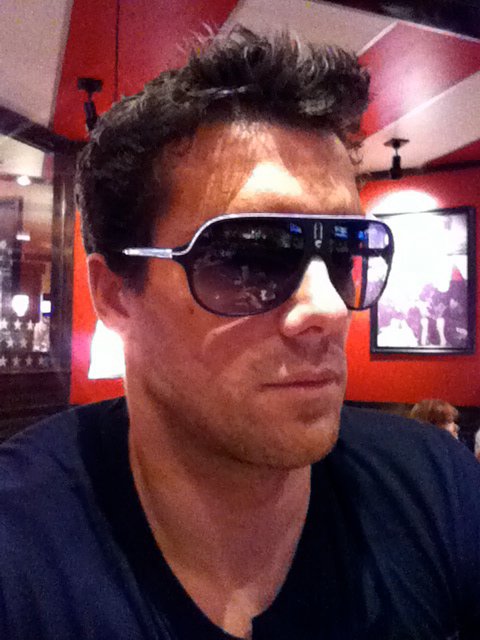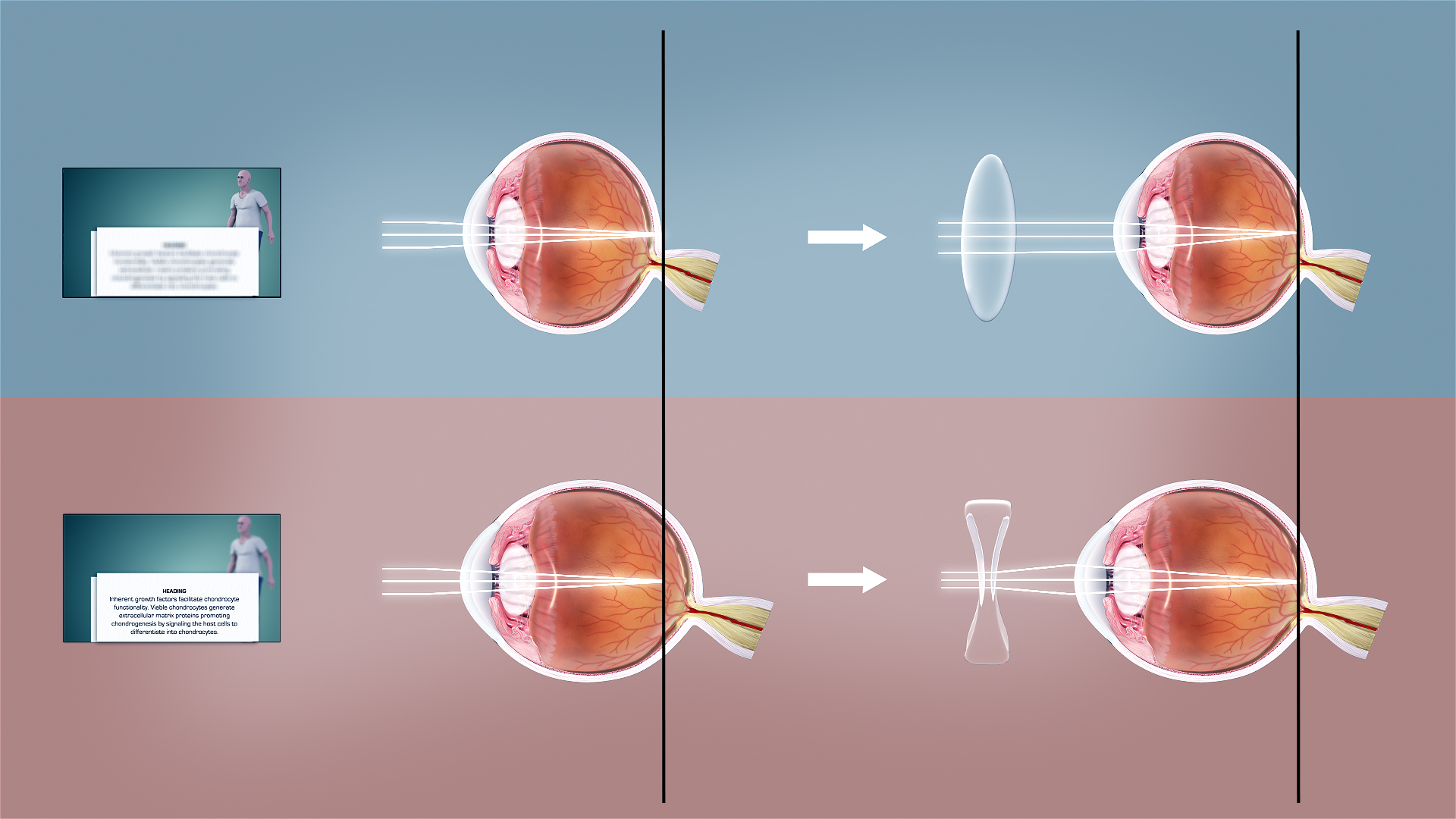|
Glasses
Glasses, also known as eyeglasses (American English), spectacles (Commonwealth English), or colloquially as specs, are vision eyewear with clear or tinted lenses mounted in a frame that holds them in front of a person's eyes, typically utilizing a bridge over the nose and hinged arms, known as temples or temple pieces, that rest over the ears for support. Glasses are typically used for vision correction, such as with reading glasses and glasses used for nearsightedness; however, without the specialized lenses, they are sometimes used for cosmetic purposes. Safety glasses are eye protection, a form of personal protective equipment ( PPE) that are worn by workers around their eyes for protection. Safety glasses act as a shield to protect the eyes from any type of foreign debris that may cause irritation or injury; these glasses may have protection on the sides of the eyes as well as in the lenses. Some types of safety glasses are used to protect against visible and n ... [...More Info...] [...Related Items...] OR: [Wikipedia] [Google] [Baidu] |
Sunglasses
Sunglasses or sun glasses (informally called shades or sunnies; more names Sunglasses#Other names, below) are a form of Eye protection, protective eyewear designed primarily to prevent bright sunlight and high-energy visible light from damaging or discomforting the eyes. They can sometimes also function as a visual aid, as variously termed spectacles or glasses exist, featuring lenses that are colored, polarizer, polarized or darkened. In the early 20th century, they were also known as sun cheaters (cheaters then being an United States, American slang term for glasses). Since the 1930s, sunglasses have been a popular fashion accessory, especially on the beach. The American Optometric Association recommends wearing sunglasses that block ultraviolet radiation (UV) whenever a person is in the sunlight to protect the eyes from UV and blue light, which can cause several #Protection, serious eye problems. Their usage is mandatory immediately after some surgical procedures, such as L ... [...More Info...] [...Related Items...] OR: [Wikipedia] [Google] [Baidu] |
Eyewear
Eyewear is a term used to refer to all devices worn over both of a person's eyes, or occasionally a single eye, for one or more of a variety of purposes. Though historically used for vision improvement and correction, eyewear has also evolved into eye protection, for fashion and aesthetic purposes, and starting in the late 20th century, computers and virtual reality. The primary intention of wearing eyewear can vary based on the need or desire of the wearer. Eyewear comes in different forms such as Glasses, Contact lenses, Sunglasses and many more. . Eyewear (such as glasses and contact lenses) helps most people see clearer or read. Eyewear also can be used for protection, such as sunglasses which protect wearers from the Sun's ultraviolet rays which are damaging to the eyes when unprotected, eyepatches to protect injured eyes from further damage, or goggles which protect the wearer's eyes from debris, water and other chemicals. Variants of eyewear can conversely inhibit or disable ... [...More Info...] [...Related Items...] OR: [Wikipedia] [Google] [Baidu] |
Corrective Lens
A corrective lens is a transmissive optical device that is worn on the eye to improve visual perception. The most common use is to treat refractive errors: myopia, hypermetropia, astigmatism, and presbyopia. Glasses or "spectacles" are worn on the face a short distance in front of the eye. Contact lenses are worn directly on the surface of the eye. Intraocular lenses are surgically implanted most commonly after cataract removal but can be used for purely refractive purposes. Prescription of corrective lenses Corrective lenses are typically prescribed by an ophthalmologist or an optometrist. The prescription consists of all the specifications necessary to make the lens. Prescriptions typically include the power specifications of each lens (for each eye). Strengths are generally prescribed in quarter- diopter steps (0.25 D), because most people cannot generally distinguish between smaller increments (e.g., eighth-diopter steps / 0.125 D). The use of improper corr ... [...More Info...] [...Related Items...] OR: [Wikipedia] [Google] [Baidu] |
3D Film
3D films are motion pictures made to give an illusion of three-dimensional solidity, usually with the help of special glasses worn by viewers. 3D films were prominently featured in the 1950s in American cinema and later experienced a worldwide resurgence in the 1980s and 1990s driven by IMAX high-end theaters and Disney-themed venues. 3D films became increasingly successful throughout the 2000s, peaking with the success of 3D presentations of ''Avatar'' in December 2009, after which 3D films again decreased in popularity. Certain directors have also taken more experimental approaches to 3D filmmaking, most notably celebrated auteur Jean-Luc Godard in his film '' Goodbye to Language''. History Before film The basic components of 3D film were introduced separately between 1833 and 1839. Stroboscopic animation was developed by Joseph Plateau in 1832 and published in 1833 in the form of a stroboscopic disc, which he later called the fantascope and became better known as the phén ... [...More Info...] [...Related Items...] OR: [Wikipedia] [Google] [Baidu] |
Stereoscopy
Stereoscopy, also called stereoscopics or stereo imaging, is a technique for creating or enhancing the depth perception, illusion of depth in an image by means of stereopsis for binocular vision. The word ''stereoscopy'' derives . Any stereoscopic image is called a stereogram. Originally, stereogram referred to a pair of stereo images which could be viewed using a stereoscope. Most stereoscopic methods present a pair of two-dimensional images to the viewer. The left image is presented to the left eye and the right image is presented to the right eye. When viewed, the human brain perceives the images as a single 3D view, giving the viewer the perception of Three-dimensional space, 3D depth. However, the 3D effect lacks proper focal depth, which gives rise to the Vergence-accommodation conflict. Stereoscopy is distinguished from other types of 3d display#3D displays, 3D displays that display an image in Three-dimensional space, three full dimensions, allowing the observer to ... [...More Info...] [...Related Items...] OR: [Wikipedia] [Google] [Baidu] |
3D Glasses
Stereoscopy, also called stereoscopics or stereo imaging, is a technique for creating or enhancing the illusion of depth in an image by means of stereopsis for binocular vision. The word ''stereoscopy'' derives . Any stereoscopic image is called a stereogram. Originally, stereogram referred to a pair of stereo images which could be viewed using a stereoscope. Most stereoscopic methods present a pair of two-dimensional images to the viewer. The left image is presented to the left eye and the right image is presented to the right eye. When viewed, the human brain perceives the images as a single 3D view, giving the viewer the perception of 3D depth. However, the 3D effect lacks proper focal depth, which gives rise to the Vergence-accommodation conflict. Stereoscopy is distinguished from other types of 3D displays that display an image in three full dimensions, allowing the observer to increase information about the 3-dimensional objects being displayed by head and eye m ... [...More Info...] [...Related Items...] OR: [Wikipedia] [Google] [Baidu] |
Eye Protection
Eye protection is protective gear for the eyes, and sometimes face, designed to reduce the risk of injury. Examples of risks requiring eye protection can include: impact from particles or debris, light or radiation, wind blast, heat, sea spray or impact from some type of ball or puck used in sports. Eye protection are typically separated into categories based on the style of eye wear and the hazard they are designed to reduce. There categories include: Spectacles with side protection; Goggles; Welding helmet; Welding Hand Shields; Non-Rigid Helmets (hoods); Face shield; and Respirator Face pieces. Styles Spectacles Safety glasses or spectacles, although often used as a catch-all term for all types of eye protection, specifically revers to protective equipment that closely resembles common eye wear. To meet most national standards, spectacles must include side shields to reduce the ability of debris to get behind the lenses from the side. Safety glasses can often moun ... [...More Info...] [...Related Items...] OR: [Wikipedia] [Google] [Baidu] |
Refractive Error
Refractive error is a problem with focus (optics), focusing light accurately on the retina due to the shape of the eye and/or cornea. The most common types of refractive error are myopia, near-sightedness, hyperopia, far-sightedness, astigmatism, and presbyopia. Near-sightedness results in far away objects being blurred vision, blurry, far-sightedness and presbyopia result in close objects being blurry, and astigmatism causes objects to appear stretched out or blurry. Other symptoms may include double vision, headaches, and eye strain. Near-sightedness is due to the length of the eyeball being too long; far-sightedness the eyeball too short; astigmatism the cornea being the wrong shape, while presbyopia results from aging of the lens of the eye such that it cannot change shape sufficiently. Some refractive errors occur more often among those whose parents are affected. Diagnosis is by eye examination. Refractive errors are corrected with eyeglasses, contact lenses, or surgery ... [...More Info...] [...Related Items...] OR: [Wikipedia] [Google] [Baidu] |
Nearsightedness
Myopia, also known as near-sightedness and short-sightedness, is an eye condition where light from distant objects focuses in front of, instead of on, the retina. As a result, distant objects appear blurry, while close objects appear normal. Other symptoms may include headaches and eye strain. Severe myopia is associated with an increased risk of macular degeneration, retinal detachment, cataracts, and glaucoma. Myopia results from the length of the eyeball growing too long or less commonly the lens being too strong. It is a type of refractive error. Diagnosis is by the use of cycloplegics during eye examination. Tentative evidence indicates that the risk of myopia can be decreased by having young children spend more time outside. This decrease in risk may be related to natural light exposure. Myopia can be corrected with eyeglasses, contact lenses, or by refractive surgery. Eyeglasses are the simplest and safest method of correction. Contact lenses can provide a relativel ... [...More Info...] [...Related Items...] OR: [Wikipedia] [Google] [Baidu] |
Presbyopia
Presbyopia is a physiological insufficiency of optical Accommodation (vertebrate eye), accommodation associated with the aging of the human eye, eye; it results in progressively worsening ability to focus clearly on close objects. Also known as age-related farsightedness (or as age-related long sight in the UK), it affects many adults over the age of 40. A common sign of presbyopia is difficulty in reading small print, which results in having to hold reading material farther away. Other symptoms associated can be headaches and eyestrain. Different people experience different degrees of problems. Other types of refractive errors may exist at the same time as presbyopia. This condition is similar to hypermetropia or far-sightedness, which starts in childhood and exhibits similar symptoms of blur in the vision for close objects. Presbyopia is a typical part of the aging process. It occurs due to age-related changes in the Lens (anatomy), lens (decreased elasticity and increased h ... [...More Info...] [...Related Items...] OR: [Wikipedia] [Google] [Baidu] |
Optometry
Optometry is the healthcare practice concerned with examining the eyes for visual defects, prescribing corrective lenses, and detecting eye abnormalities. In the United States and Canada, optometrists are those that hold a post-baccalaureate four-year Doctor of Optometry degree. They are trained and licensed to practice medicine for eye related conditions, in addition to providing refractive (optical) eye care. Within their scope of practice, optometrists are considered physicians and bill medical insurance(s) (example: Medicare) accordingly. In the United Kingdom, optometrists may also provide medical care (e.g. prescribe medications and perform various surgeries) for eye-related conditions in addition to providing refractive care. The Doctor of Optometry degree is rarer in the UK. Many optometrists participate in academic research for eye-related conditions and diseases. In addition to prescribing glasses and contact lenses for vision related deficiencies, optometrists are ... [...More Info...] [...Related Items...] OR: [Wikipedia] [Google] [Baidu] |










